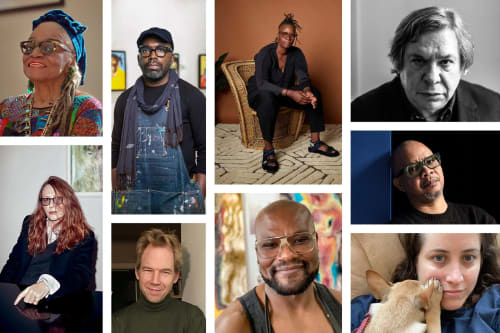Beyond simple hero and villain stories, Picasso is a fact of life 50 years after his death. We all swim in a visual world he helped constitute.
Mickalene Thomas
For several years, the artist has taken on modern masters very directly — Picasso lately, and previously Matisse — with collage paintings that can involve sequins and sparkles.

I’m fascinated with Picasso’s ability to create works about controversial sociopolitical issues, while also depicting abstracted portraits of seated or reclining women.
My first deep dive into his world began while I was a student at Pratt Institute and I encountered a reproduction of a painting by the Cuban modernist, Wifredo Lam, and soon learned that Picasso was both Lam’s friend and an inspiration. This gave me a kind of permission to do whatever I wanted with Picasso.
Around this time I was also delving into Matisse. My work has always been a simultaneous exploration of genres and the formal aspects of painting. I collage together various styles and images, adding certain nuances to each work.
In my most recent “Resist” series of paintings, I borrowed from Picasso’s wartime canvases with their mix of dead bodies and still lifes, specifically in my pieces The Charnel House (Resist #5) from 2021 and Pitcher and Skeleton (Resist #8) from 2022. For me, these works sharpen the meaning of one of my favorite James Baldwin quotes: “Not everything that is faced can be changed, but nothing can be changed until it is faced.”

